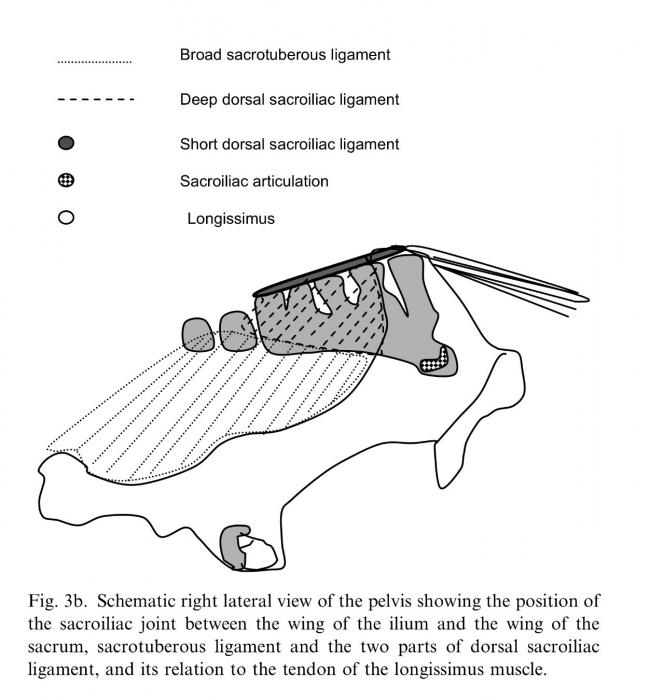
The equine sacroilac joint function and clinical disease
Sacroiliac joint dysfunction (SID) can be an important and prevalent cause of poor athletic performances. The development of a range of specific manual techniques to test the biomechanics of the sacroiliac joint offers potential. A battery of manual provocation tests used with other diagnostic modalities, such as scintigraphy and ultrasonography can provide a more definitive non-invasive diagnosis.
This review describes two clinical presentations of SID. A performance horse where the main clinical findings are pain and poor performance, with the signs usually responsive to regional analgesia. And a more chronic form of SID with pathological joint changes, resulting in poor performance, marked gait changes with asymmetry of associated muscle and/or bone. These horses show little improvement to regional analgesia and are less pain response.
Movements of the equine sacroiliac joint (SIJ) is considered to be small and complex. These movements are controlled and stabilized by muscles and restraining soft tissue. Mild articular instability, functional instability, traumata or altered neuromotor control can occur in the equine SIJ and may result in gradual remodeling of the joint.
The most consistent important clinical feature is reduced impulsion of the hindlimb and a history of poor performance. Manual test include palpation of the short dorsal sacroiliac ligament, SIJ compression via medial directed force, via ventral force and pain palpation of the middle gluteal muscle.
> L.M.Goff et al. The Veterinary Journal. June 2008, Vol.176(3):281–293. All rights reserved to Elsevier Ltd. Click here for the Pubmed summary


